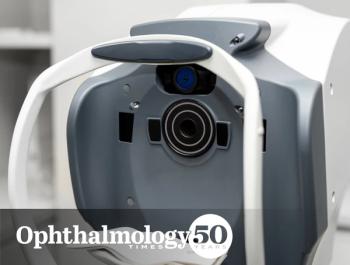
SERPICO-10 study details COVID-19 impact on retina
Investigators have found that the diameter of retinal veins may be linked directly to the severity of COVID-19. Assessing the retinal veins may be a part of diagnosing and managing the disease.
The diameter of retinal veins seem to be linked directly to the severity of
The authors based their rationale for this cross-sectional, single-center study on the fact that COVID-19 already has been associated with microvascular alterations in other areas of the body.
The authors used fundus photographs to screen the fundi of patients with COVID-19 to detect any retinal and vasculature changes and assess possible correlations with clinical parameters.
Related:
“The arteries and veins of the retina represent a window on the vascular system, as they are exposed to the same pathological processes and show changes in many systemic diseases,” the investigators stated.
Moreover, investigators noted that alterations of the retina are also commonly seen in patients with viral diseases.
“These pathologic phenomena can occur due to a direct cytopathic effect of the microorganism on retinal neurons as in case of cytomegalovirus, or secondary to a damage to the microvasculature when the virus targets the vessels endothelium like in HIV retinopathy,” they said. “Interestingly, SARS-CoV-2 is able to infect endothelial cells and has been detected in the retina.”
Related:
The study
Patients who were admitted to the Department of the Luigi Sacco Hospital with a diagnosis of SARS-CoV-2 infection were asked to participate in the study.
The control group was comprised of hospital and university staff who had not been exposed to the virus.
The investigators, led by lead author Alessandro Invernizzi, MD, determined the mean diameters of the arteries and veins in patients with COVID-19 and compared them to the unexposed subjects; the covariates considered were age, sex, ethnicity, body mass index, smoking/alcohol consumption, hypertension, hyperlipidemia, and diabetes.
Invernizzi is with the Eye Clinic, Luigi Sacco Hospital, ASST Fatebenefrateli-Sacco, in Milan, Italy.
Related:
Fifty-four patients and 133 unexposed subjects ultimately were included in the analysis. The investigators reported that the retinal findings in the patients with COVID-19 included hemorrhages (9.25%), cotton wool spots (7.4%), dilated veins (27.7%), and tortuous vessels (12.9%).
The mean arterial and venous diameters were significantly (p=0.006 and p<0.0001, respectively) greater in the COVID-19 patients compared to unexposed subjects (98.3 ± 15.3 µm vs 91.9 ± 11.7 µm and 138.5 ± 21.5 µm vs 123.2 ± 13.0 µm, respectively).
Multiple regression analysis showed that the venous diameters were associated positively with COVID-19 in severe (coefficient 30.3, 95% confidence interval [CI] 95%, 18.1–42.4) and non-severe (coefficient 10.3, 95% CI, 1.6–19.0) cases compared to unexposed subjects.
In the patients, the venous diameters were correlated negatively with the time from the onset of symptoms (coefficient −1.0, CI 95%, −1.89 to −0.20) and positively with the disease severity (coefficient 22.0, CI 95%, 5.2–38.9).
“In summary, we found that COVID-19 can induce important changes at the level of the retina, most of them affecting the retinal vasculature and particularly the veins,” the investigators concluded. “The entity of such changes was correlated directly with the disease severity and seemed to affect patients early in the disease course.”
They did point out, however, that they could not determine if the retinal changes resulted from the virus or if they were due to the immune response of the host.
Related:
However, they suggested that the diameter of the retinal veins may be useful to monitor the inflammatory response and/or the endothelial damage in COVID-19 and recommended that retinal changes be investigated in future prospective studies to understand their possible applications in the diagnosis and management of COVID-19.
---
Alessandro Invernizzi, MD
E: [email protected]
Invernizzi has no financial disclosures related to this content.
Reference
1. Invernizzi A, Torre A, Parulli S, et al. Retinal findings in patients with COVID-19: Results from the SERPICO-19 study. EClinicalMedicine 2020; https://doi.org/10.1016/j.eclinm.2020.100550
Newsletter
Don’t miss out—get Ophthalmology Times updates on the latest clinical advancements and expert interviews, straight to your inbox.



















































.png)


